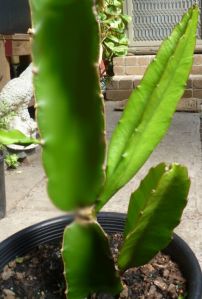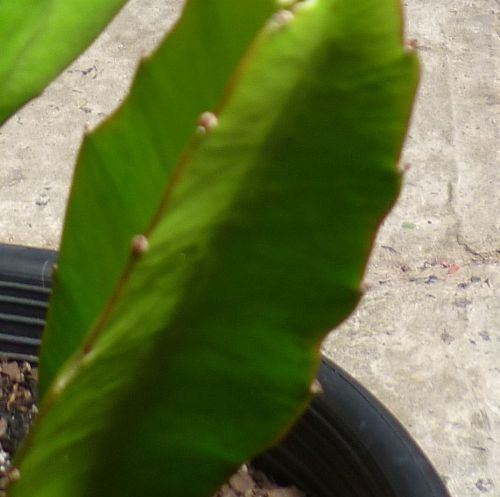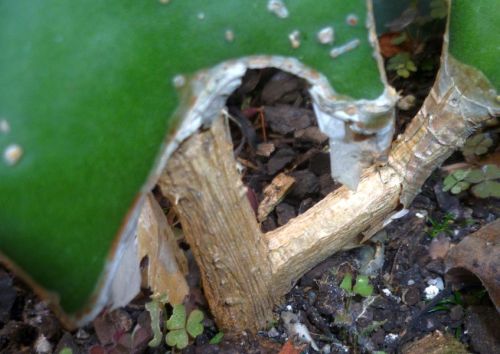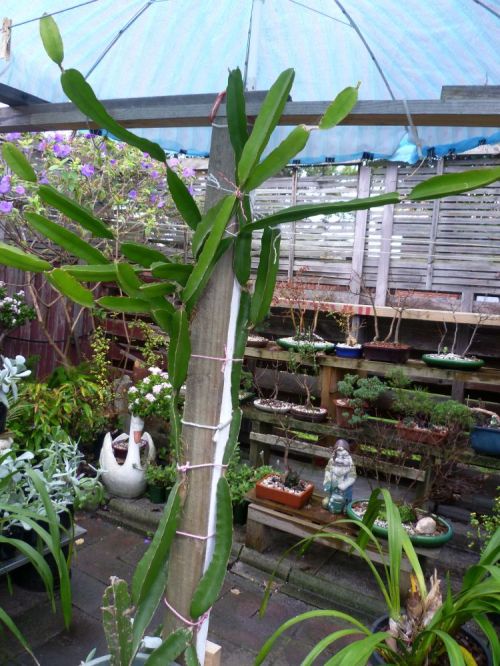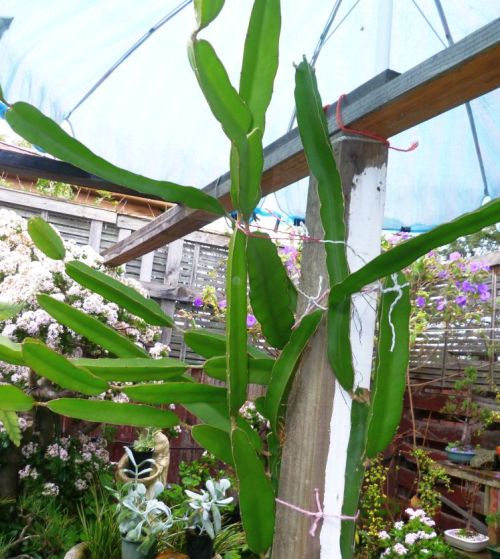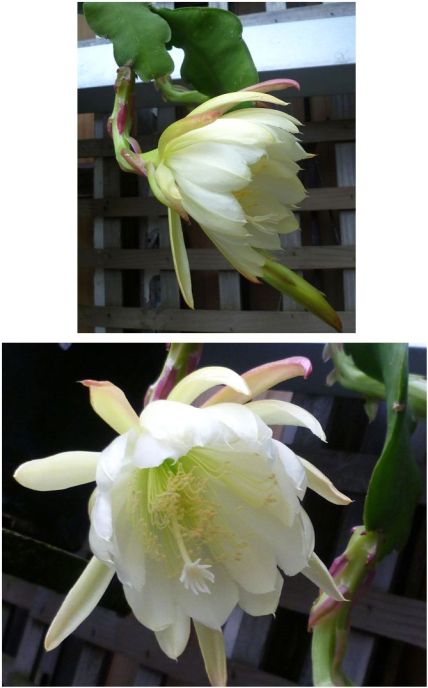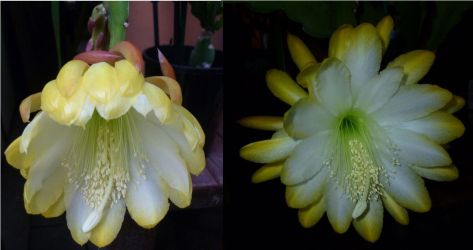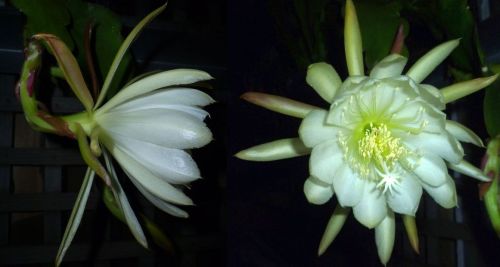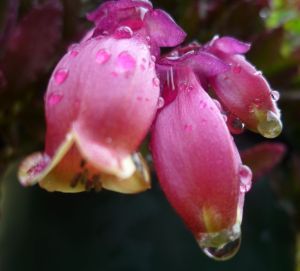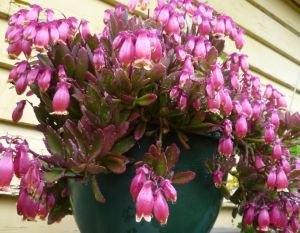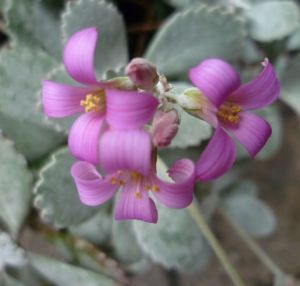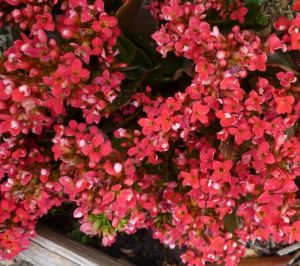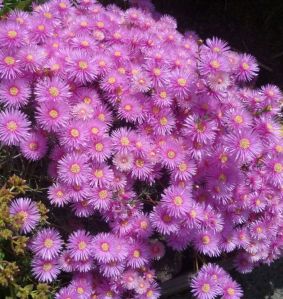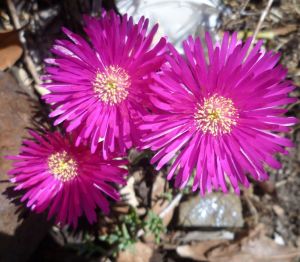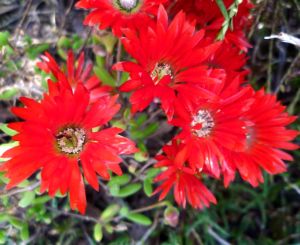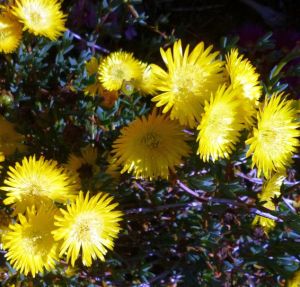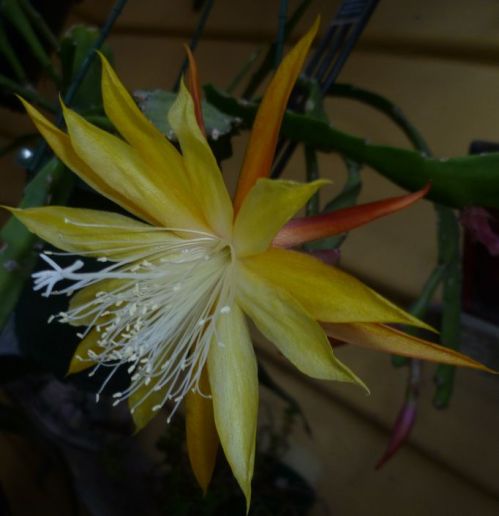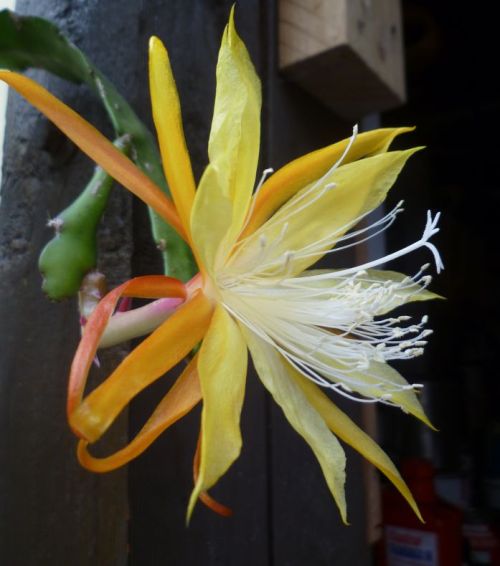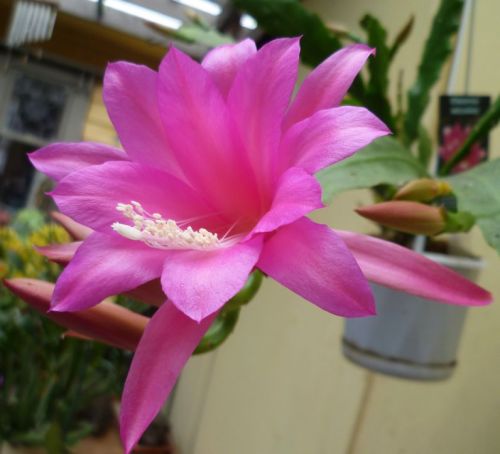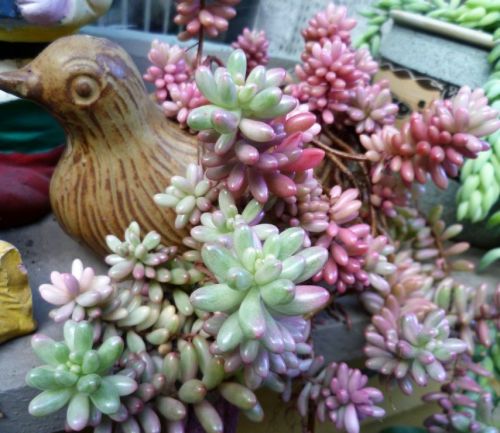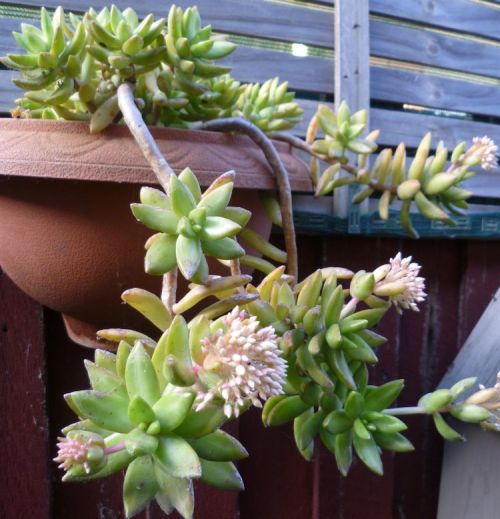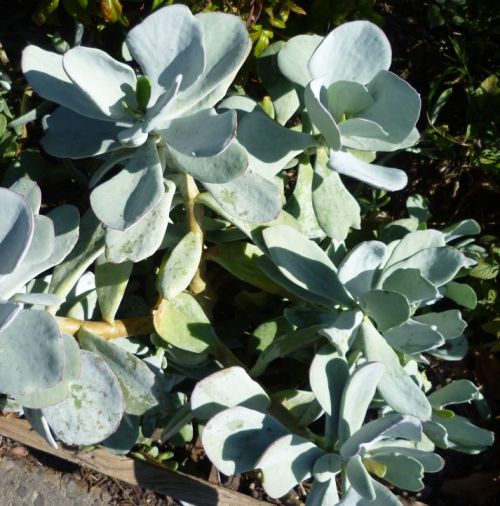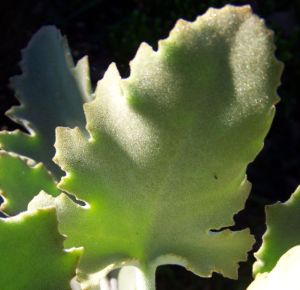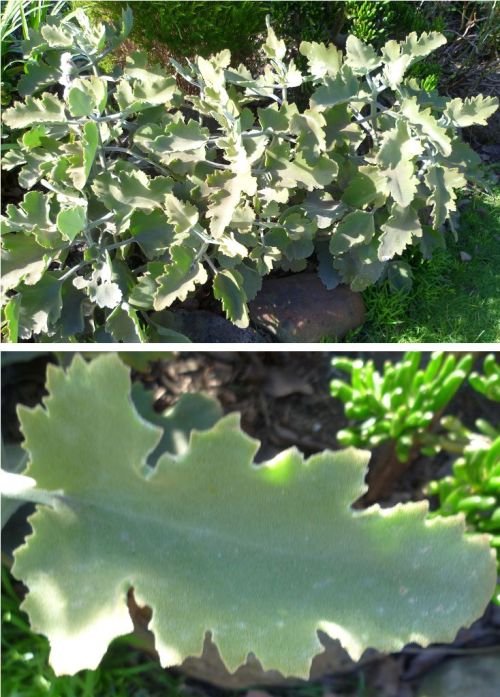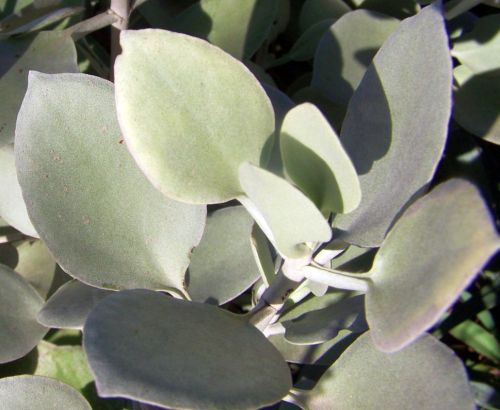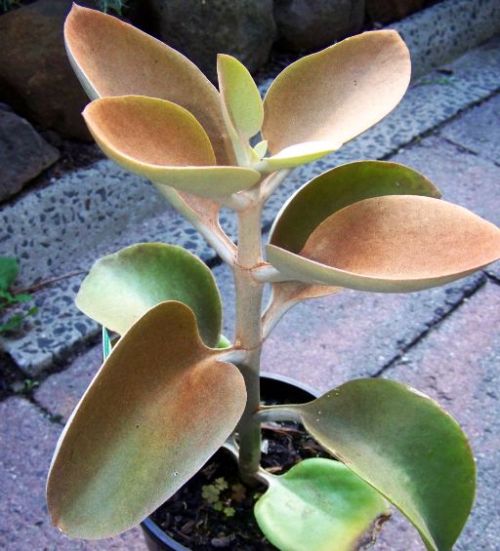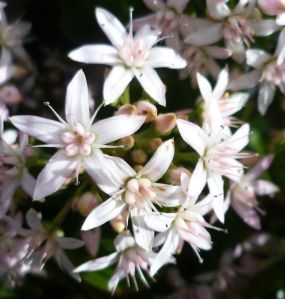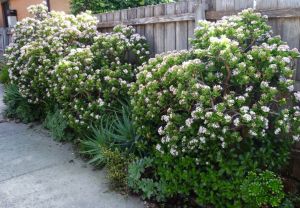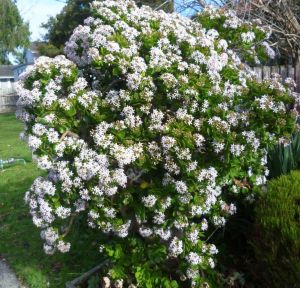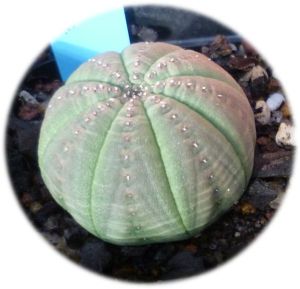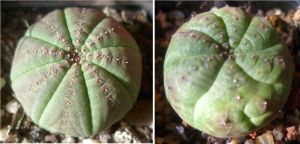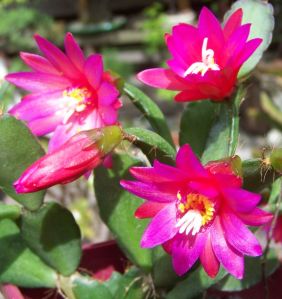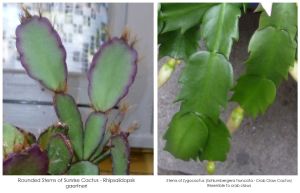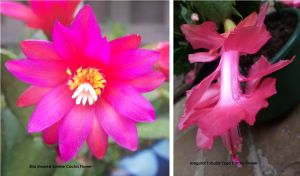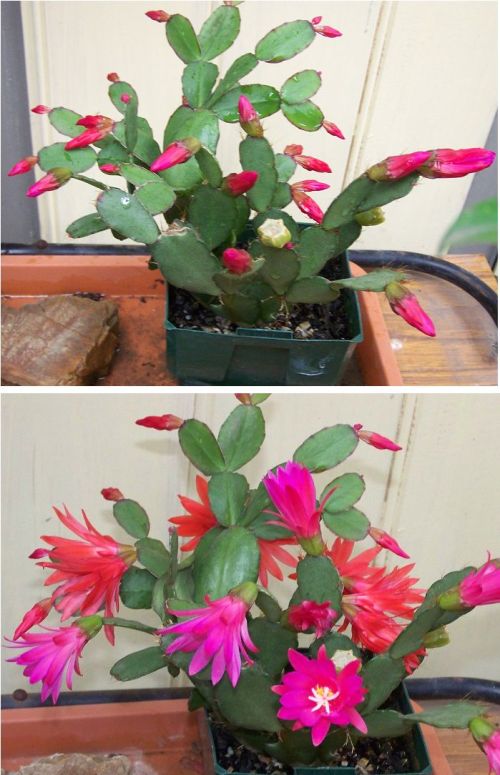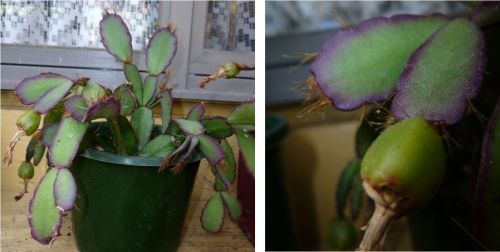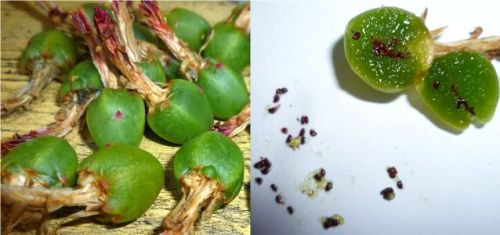I saw the dragon fruit plants for sale in the plant nursery along Police Rd. I thought it would be nice to have one of these plants as 2012 is dragon year:). The big ones were too expensive, so I bought the small one. The seller said it was suitable to Melbourne climate. The fruit will be white inside with tiny black seeds.
Actually I never taste dragon fruits, but it doesn’t matter. I just want to add the plant to my cactus collections. Hylocereus undatus, the Latin name for Dragon fruit cactus and the other name is pataya. I read somewhere that the plant originally grow wild around central America. Later on the cultivations of the plant for fruit production are popular in Vietnam and Hawaii.
Hylocereus undatus is still related to epyphyllum. While epyphyllums have flat stems, Hylocereus stems are three sided. The plant will grow quite large with climbing and sprawling habit, and it needs strong support. The large flowers are white with beautiful fragrant and only bloom one night. For this reason, hand polination is needed to make sure the blooms will produce fruits.
Update July 6, 2014:
Last year (2013), the cold and wet winter damaged the plant. The base and some of the branches were soft and rotted, I was afraid that it was not going to make it. The main stem that support the whole plant is now kind of hollow. Amazingly it recovered and now it has grown quite high, more than 2 meters tall with many new stems on the top. I put a large garden umbrella to protect it from too much rain, wind and cold weather this winter. Hopefully it will grow flowers in Spring.
